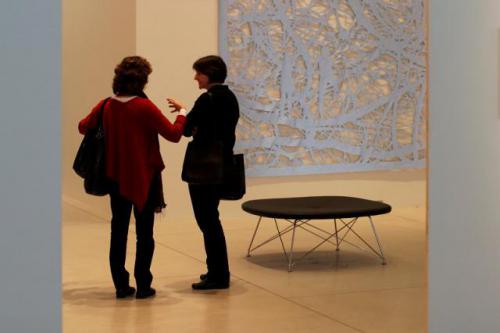
Image Credit:
This semester I wanted to develop the Mass Effect lesson I devised in the fall. That lesson used the video game as a rhetorical modeling technology, which (I hoped) would have student thinking about how rhetorical decisions afford and foreclose others “down the line.” In my discussions of this lesson with many of you, I was encouraged to develop a writing lesson that would give students a chance to make their own Mass Effect-style modular arguments. The lesson I’ve learned from devising this exercise is the advantage of letting students in on the lesson-making process.
I’ll admit that, when I made the copious materials my lesson required, I wasn’t too sure myself how to turn persuasive articles into the sort of rhetorical prompts given to the player of Mass Effect. The relation between these prompts and what Shepard says is by no means obvious but an interesting rhetorical question in its own right.
So I brought the lesson to class without having mastered (or even fully understood) the skills I was asking the students to practice and develop. This made me nervous. The students perceived that I could not communicate to them precisely what I was looking for them to do. I referenced what we’d learned the previous class playing the game; I told them that I wanted them to take the provided material and make “modular” arguments; I gave them a sense of my thought process, the difficulties I’d encountered, and my ambitions for the lesson. And then I stopped talking, half-expecting insubordination. “You’ve no idea what you’re talking about! How can you ask us to do this when you can’t even do it yourself? What gives you the right to grade us when you can’t model what an A would look like?”
What I got instead was collaboration. “Wouldn’t it also be possible to write the prompts like this?” “Isn’t there another decision going on behind these words?” “Couldn’t we connect these two lines, like this, since they go to the same place from here on out?”
As luck would have it, I recently came upon a young Raymond Williams arguing for the pedagogical superiority of communication over transmission. In some educational contexts, his words (at the end of Culture and Society) might strike one as hopelessly optimistic. But in the rhe306 classroom, and last week, his argument held true:
Communication is not only transmission; it is also reception and response. . . . The very failure of so many of the items of transmission which I have listed is not an accident, but the result of a failure to understand communication. The failure is due to an arrogant preoccupation with transmission, which rests on the assumption that the common answers have been found and need only to be applied. (309, 314)
This may seem like teaching 101 to all of you, but I guess I didn’t fully trust it. I was surprised when my students turned collaborators, but I don’t know why I should’ve been, since working towards an answer is a much more satisfying experience than being told one. (Bo’s April 4th post is worth reading for insights into how to devise lessons that purposefully make the learning process communicative and collaborative).

